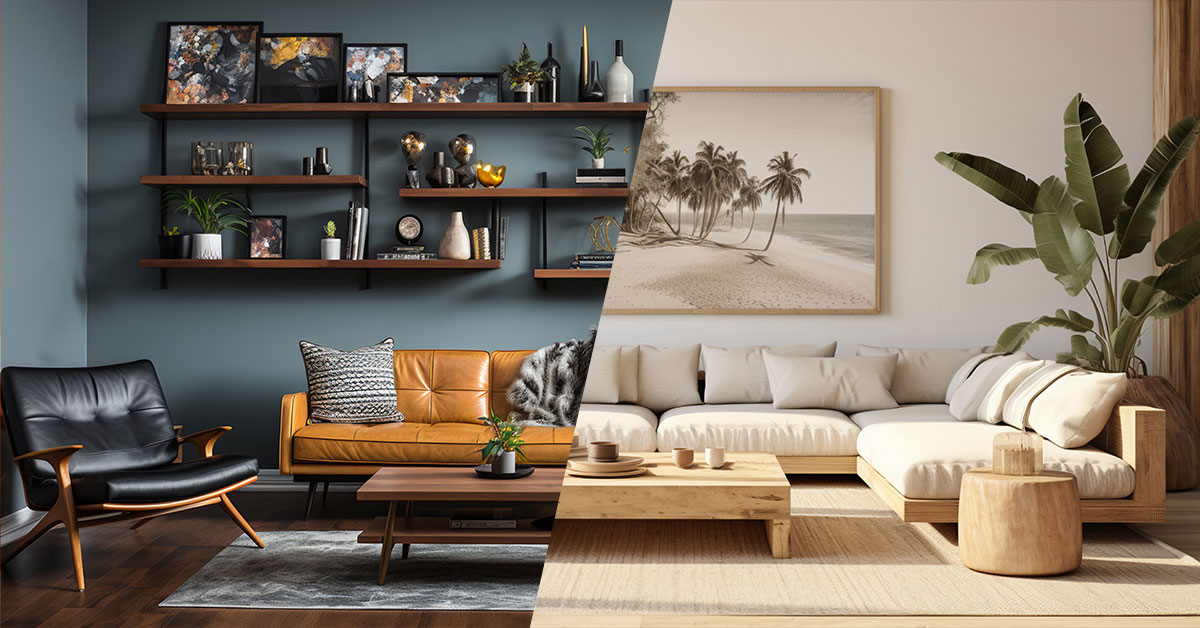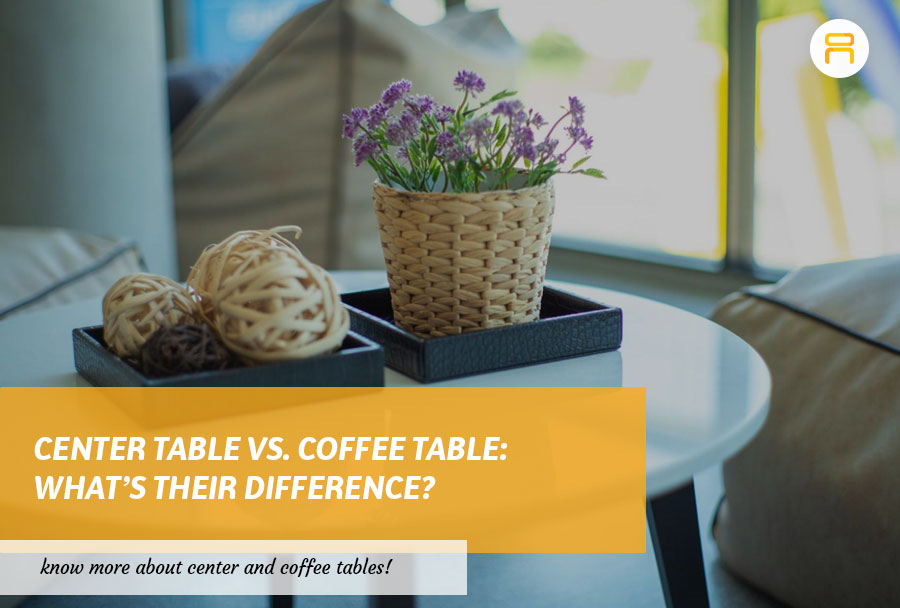
Mid-Century Modern vs. Scandinavian Furniture: Decoding the Differences
Two popular design movements that often get mixed up are Mid-Century Modern furniture and Scandinavian furniture. Both have their roots in the same era, but they bring distinct vibes to your space. To help you decide, we’ll break down these styles, so you can gauge which one (or mix of both) suits your home best.
What’s Inside
- Understanding Mid-Century Modern Furniture
- Characteristics of Mid-Century Modern Furniture
- Exploring Scandinavian Furniture
- Characteristics of Scandinavian Furniture
- Differences Between Mid-Century Modern and Scandinavian Furniture
- How to Choose Between Mid-Century Modern and Scandinavian Furniture
- Blending the Two Styles
Understanding Mid-Century Modern Furniture
History and Origins
Mid-Century Modern furniture emerged in the mid-20th century, roughly between the 1940s and 1970s. This design movement took off in post-war America, aiming to bring sleek, functional, and affordable furniture to the masses.
Characteristics of Mid-Century Modern Furniture
1. Sleek Lines and Minimalism
Mid-Century Modern furniture is all about clean, straight lines. It’s minimalist, avoiding unnecessary ornamentation. Think of a low-profile sofa with slender legs or a simple wooden coffee table with an elegant finish.
2. Organic and Geometric Shapes
This style embraces both organic shapes, inspired by nature, and geometric forms. You might see a chair with curved edges or a lamp with a bold, angular design.
3. Innovative Use of Materials
Mid-Century Modern designers experimented with new materials like metal, vinyl, fiberglass, and plywood, combining them to craft a distinctive look.
4. Functionality
Above all, this kind of furniture design is functional. Every piece is crafted with a purpose, balancing aesthetics with practicality.
Exploring Scandinavian Furniture
History and Origins
Scandinavian furniture, also known as Nordic design, originated from the Nordic countries: Denmark, Sweden, Norway, Iceland, and Finland. It gained popularity in the 1950s and focuses on simplicity, functionality, and neutral colors, drawing inspiration from the long periods of darkness and cold during winter in the Nordic region, where people yearn for a cozy and bright atmosphere.
Characteristics of Scandinavian Furniture
1. Simplicity and Minimalism
Like Mid-Century Modern, Scandinavian furniture values simplicity. However, it often feels warmer and cozier as it aims to create a serene and inviting atmosphere. Think of a simple wooden dining table paired with soft, cushioned chairs.
2. Natural Materials
Nordic design heavily relies on natural materials like wood, leather, and wool. Light-colored woods such as walnut, ash, oak are common, enhancing the bright and airy feel of the space.
3. Neutral Colors
The color palette in Scandinavian furniture is typically neutral, featuring whites, grays, and beiges. These shades make spaces feel larger and more open. Occasionally, you’ll find pops of color in muted tones like pastel blues or greens.
4. Functionality and Comfort
Scandinavian furniture prioritizes both functionality and comfort. Pieces are designed to be practical for everyday use while also providing a cozy, inviting atmosphere. Think of a plush sofa with simple lines or a bed with a soft, knitted throw.
Differences Between Mid-Century Modern and Scandinavian Furniture
1. Design Philosophy
- Mid-Century Modern
The design philosophy here is to create a balance between form and function. It focuses on futuristic designs, sometimes appearing almost avant-garde. The aim is to innovate while still being practical.
- Scandinavian
Nordic design, on the other hand, is all about creating a harmonious, tranquil living space. It aims to make homes feel comfortable and welcoming, emphasizing the use of natural light and materials to combat the long, dark winters of the Nordic countries.
2. Material Choices
- Mid-Century Modern
This style embraces new materials and methods, combining manufactured and natural materials—which often give the furniture a sleek, sometimes industrial look.
- Scandinavian
In contrast, Scandinavian furniture sticks to traditional, natural materials. Wood, leather, and textiles are prominent, enhancing the warmth and simplicity of the design.
3. Color Palette
- Mid-Century Modern
While this design utilizes neutral colors like white and gray, you can still expect to see bold, contrasting color palettes such as blue, yellow, orange, and green paired with black and white.
- Scandinavian
Nordic design opts for a more subdued palette. Whites, grays, and natural wood tones dominate, with occasional muted color accents to add interest without overwhelming the space.
How to Choose Between Mid-Century Modern and Scandinavian Furniture
1. Consider Your Space
If you have a larger space or open floor plan, Mid-Century Modern pieces can help define different areas without making the room feel cluttered. Their bold shapes and colors can create a striking focal point.
Scandinavian furniture works well in smaller spaces or rooms where you want a calm, airy feel. Its light colors and minimalistic design can make a room feel larger and more inviting.
2. Think About Maintenance
The sleek surfaces and minimalist designs of Mid-Century Modern furniture are relatively easy to clean. However, some materials like metal or certain plastics might show wear and tear more quickly.
With its emphasis on natural materials, Scandinavian furniture might require more upkeep to maintain its appearance. For example, wooden surfaces might need occasional refinishing, and fabric components might need regular cleaning to stay fresh.
3. Reflect on Your Personal Style
If you love bold designs, vibrant colors, and a bit of retro flair, Mid-Century Modern furniture is likely your match. It’s perfect for those who appreciate a vintage aesthetic with a modern twist.
For those who prefer a more understated, serene environment, Scandinavian furniture is ideal. It suits individuals who value simplicity, comfort, and a connection to nature in their home decor.
Blending the Two Styles
You don’t have to choose one style exclusively. Blending Mid-Century Modern and Scandinavian furniture can create a unique and personalized space. Here’s how to do it:
1. Mix and Match Materials
Combine the natural materials of Scandinavian design with the innovative materials of Mid-Century Modern. For example, pair a wooden Scandinavian coffee table with sleek Mid-Century Modern chairs.
2. Balance Bold and Neutral Colors
Use neutral Scandinavian colors as your base and add pops of bold Mid-Century Modern colors through accessories like cushions, rugs, or artwork.
3. Combine Shapes and Lines
Blend the straight lines and geometric shapes of Mid-Century Modern with the softer, organic shapes found in Scandinavian furniture. This can add visual interest and balance to your space.
4. Prioritize Function and Comfort
Ensure that every piece you choose serves a purpose and adds comfort to your home. This shared principle between both styles will help create a cohesive and functional living space.
Both furniture designs offer unique benefits and can significantly enhance your home’s aesthetic. Mid-Century Modern is perfect for those who love a bold, retro look with a modern edge, while Scandinavian furniture is ideal for creating a calm, inviting environment with a focus on natural materials and simplicity.
Learning more about the differences and similarities between these two styles can help you make informed decisions when furnishing your home. Whether you lean towards one style or enjoy blending both, the most important thing is that your space reflects your personal taste and feels like home.
If you are looking for home furniture in the Philippines, visit our page. We have a variety of furniture items for you to choose from!
Like our Facebook page and follow us on our Instagram to keep in touch with us regularly.



